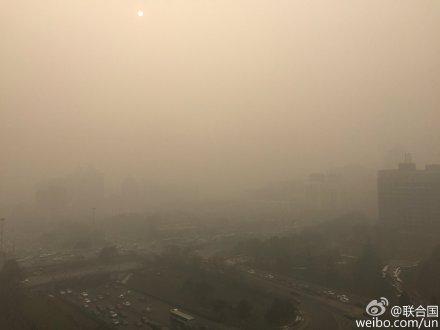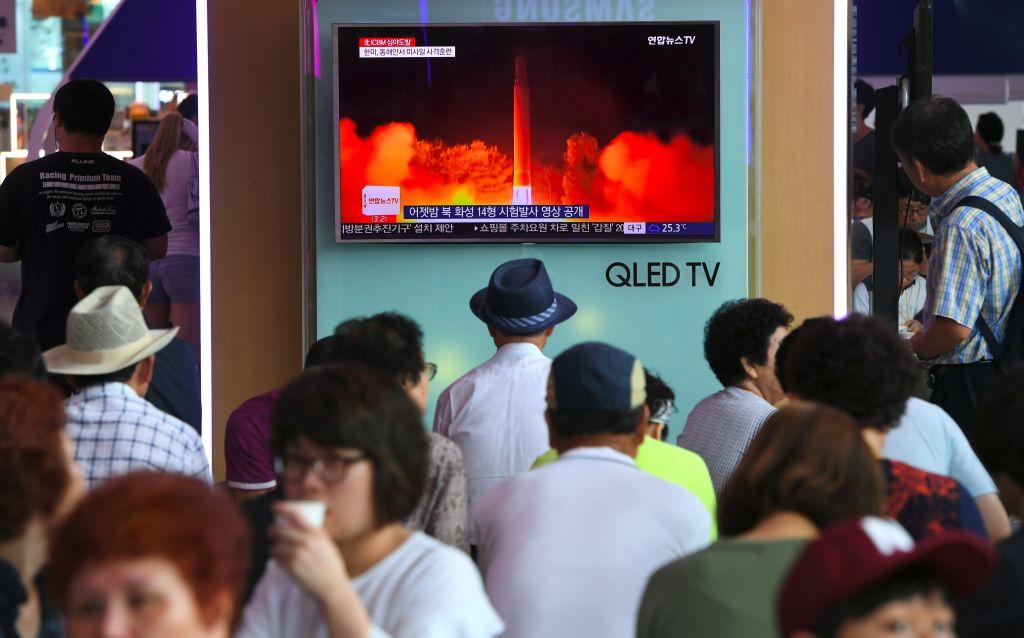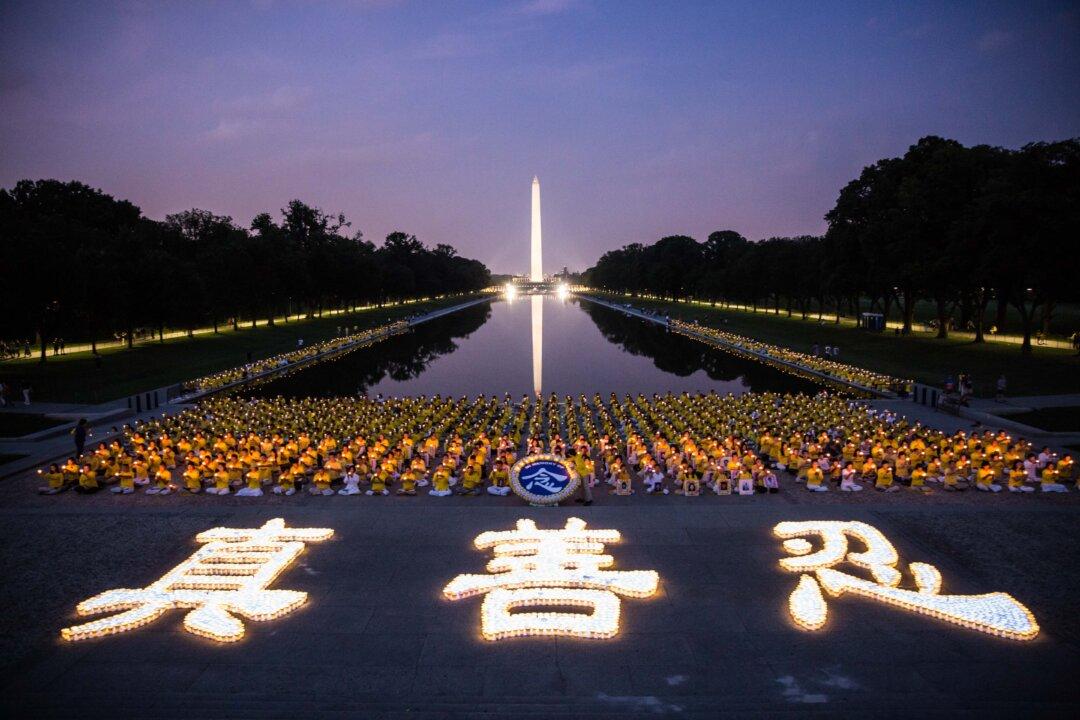If the Chinese delegation wished to call the attention of the international climate conference in Paris to the dangers of unchecked air pollution, it would only need to point in the direction of Beijing.
When the conference, called COP21, began on Monday, Nov. 30, China’s capital was hit with a thick smog cloud that contained over 20 times the level of hazardous particles that the World Health Organization considers healthy.
The smog, which began over the weekend, saw Beijing residents flooding the hospitals for respiratory maladies, and visibility was so poor that iconic buildings simply vanished in the acrid, gray blanket. Expats on Facebook posted selfies composed of solid gray boxes.
In response, on Nov. 29 Beijing authorities issued an orange pollution alert, the second-highest level, advising the city’s 22.5 million inhabitants to stay indoors, and closing sections of highways. Over 2,100 companies in polluting industries, and all construction sites in the city, were also made to cease operations that day, according to the state-run China Daily.
By the early hours of Wednesday, Beijing time, air quality in the city had improved to within healthy international limits, according to U.S. Embassy readings.
The Beijing authorities’ rapid response to remedy the hostile air quality seems laudable and appears to lend some credibility to the Chinese regime’s COP21 target to slash greenhouse gas emissions by 2030.
Yet this has already become a familiar scenario in recent years: the severe pollution, drastic curbs to polluting industries, and a stretch of clear skies before the smog creeps insidiously back in. There are still no signs that the regime has the will to translate its heavy-handed, short-term measures into sustainable, long-term initiatives to improve the environment.
Beijing residents expressed frustration with the smothering smog, and many complained that the local authorities didn’t take action sooner.
‘Worst Day’
“It’s the worst day so far this year,” said Liu Feifie, a 36-year-old mother and Internet company employee, speaking to The Associated Press. “I feel my throat totally congested with phlegm and it feels very itchy. But I’m more concerned about the health of my 7-year-old child.”
The smog is a serious health hazard because it contains carcinogens, tiny PM2.5 particles. On Nov. 30, levels of PM2.5 had reached over 600 micrograms per cubic meter in several parts of Beijing, and up to the 900s in some suburban neighborhoods.
To put that in perspective, the World Health Organization considers any exposure above 25 micrograms over a 24-hour period as unhealthy. The Chinese Ministry of Environmental Protection said that the total area affected covered 530,000 square kilometers (about 205,000 square miles).
The air quality had already exceeded the 300 mark starting Nov. 27. Chinese citizens are angry that the authorities have such a high threshold for issuing a red alert—a reading over 300 for three consecutive days—in which they would limit the number of cars on the streets by allowing only even or odd car plates to travel at certain times.
The weekend smog was not limited to just Beijing: residents in the coastal city of Shanghai, eastern province of Shandong, and inland territory of Shaanxi also took to Chinese social media to report hazy conditions; netizens in Shanghai reported that they couldn’t see their outstretched hands.
Chinese netizens, however, showed a sense of humor as the smog made midday look like early evening.
APEC Blue
On the Chinese microblogging site Sina Weibo, the United Nation’s account posted an image of Beijing enveloped by a grayish soup of smog with the caption “Today’s Beijing ... The Paris climate summit is commencing, what are your expectations?”





